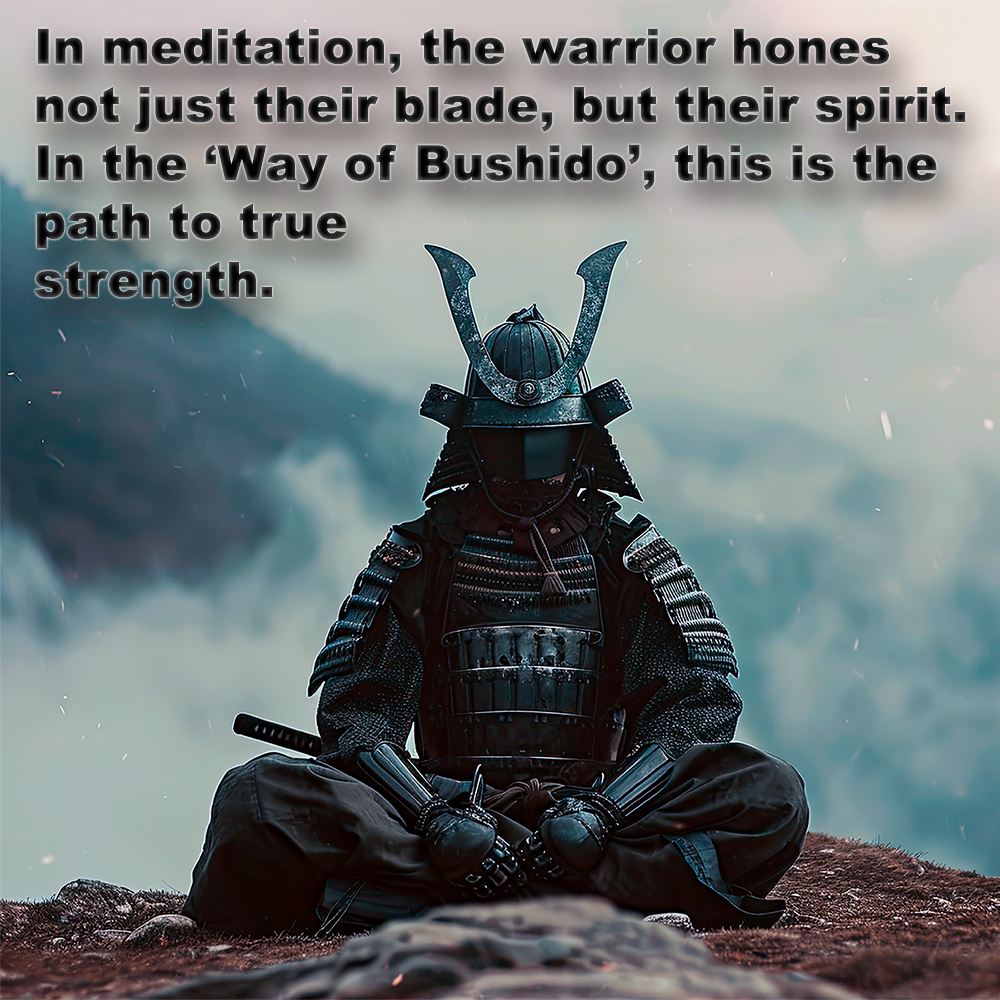
(2 minute and 28 second read)
Imagine a set of precepts that’s not just about fighting, but about living with honor and respect. That’s ‘Bushido’ (武士道), the “way of the warrior”.
.
A code forged in the fires of battle, wielding both the noble ideals of chivalry and the harsh realities of violence.
.
Bushido is a code of conduct that emerged in Japan, formalized during the ‘Edo’ period (1603–1868). Inspiration drawn from Confucianism, and influenced by Shinto and Zen Buddhism.
.
The Bushido code contains eight key principles, or virtues, that warriors were expected to uphold. There are technically seven, the eighth virtue is possessing the self-control and diligence to apply the seven written virtues to your conduct.
.
The Eight Principles are:
.
Justice (Gi), Courage (Yu), Compassion (Jin), Respect (Rei), Integrity (Makato), Honor (Meiyo), Loyalty (Chu), and Self-control (Jisei).
.
The word ‘bushi’ in Japan, a synonym for warrior, serves as a root for the word ‘Bushido.’ The word Samurai roughly translates to ‘those who serve,’ but has come to mean warrior.
.
‘Bushi’ In Okinawa means something different.
.
“Someone who has mastered all the aspects of this art is called a ‘Bushi’ in Okinawa. On mainland Japan a ‘Bushi’ means a samurai but in Okinawa it’s different. In Okinawa it’s someone who has really trained in karate. Someone who has discovered the correct way of life and achieved a placid state of mind.” – Morio Higaonna 10th dan Goju Ryu
.
Bushido on the Japanese mainland stressed rigid loyalty and hierarchy, while independent Okinawa fostered community and adaptation.
.
Okinawan martial arts, perhaps reflecting this, a way of life prioritized by defense over aggression.
.
Overall, the Bushido code calls for an appreciation and respect for life, and teaches that people should lead by example. This strong sense of honor, discipline, loyalty, and devotion can still be seen in Japanese culture today.
.
Bushido wasn’t just for battlefields. It shaped how samurai interacted, inspired art and stories, and even influenced modern Japan’s values like hard work and respect for elders.
.
But it wasn’t perfect. It led to blind obedience and fueled wars. It treated people outside the samurai class unfairly and sometimes violently.
.
Bushido’s core principles of justice, courage, and respect, guide us today. And there’s no doubt we need this in the world right now. It reminds us to be strong, kind, and true to ourselves.
.
However, it is more than just a warrior’s code; it stands as a testament to a philosophy that sought to cultivate an honorable, disciplined, and self-aware individual.
.
While Bushido’s historical context may warrant critical examination, its core values of courage, honor, and self-discipline continue to resonate. It reminds us of the importance of living with intention, holding ourselves accountable, and striving for self-mastery.
.
By understanding Bushido, we gain insight into a fascinating culture and glean timeless principles that can enhance our own lives, even in a world far removed from the samurai.
.
Many dojo today thrive on similar principles. We have the ‘Dojo Precepts’ which often include; respect, discipline, and the relentless pursuit of self-improvement, binding us together, echoing across time.
.
Though swords may be replaced with keiko-gi and belts, the spirit of dedication and personal growth remains with us. So train diligently, and remember, your practice cultivates not just martial prowess, but the strength of character that transcends the dojo and your daily lives.
.
.
Photo Credit: Freepik
.
.
